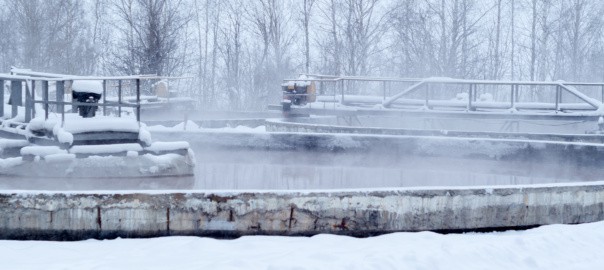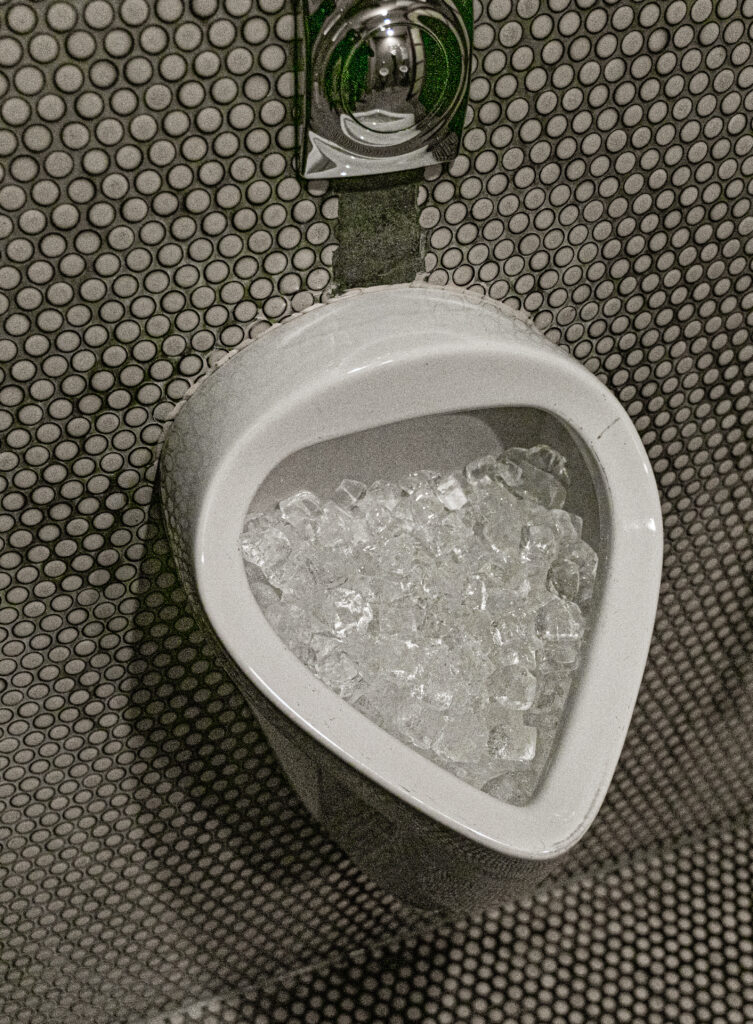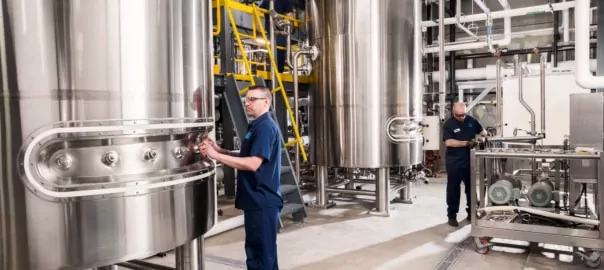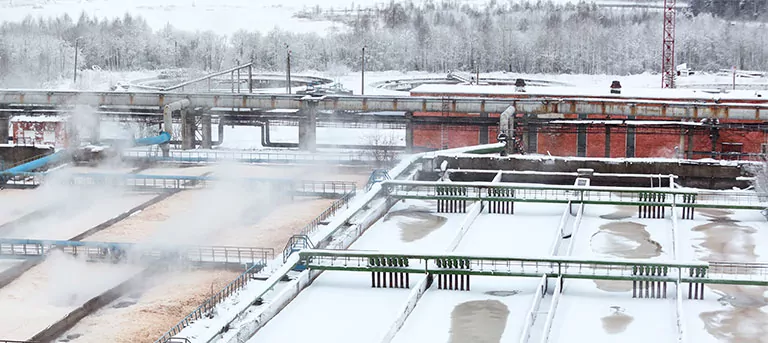Industry Insights and Thought Leadership
Industry Reflections

Clearing Up Fats, Oils & Grease
In the restaurant industry, it is common for under-maintained grease interceptors to produce heavy fats, oils, and grease (FOG). Fats, oils, and grease accumulated within collection systems from residential areas and restaurants are common as well! Managing and maintaining FOG is important for reducing odors for customers and citizens. Fats, oils, and grease that originate from restaurants, residential homes, and food processing facilities are commonly discharged into sewer systems. Picture things like vegetable oil and solid fats, such as lard. They eventually accumulate and can cause blockages in drainage systems, grease traps, and lift stations. Luckily for us (and our customers), FOG and other solids can be effectively broken down, digested, and removed with the use of bioaugmentation products by making the entire population more efficient. Tool #1: Bacillus Produce Enzymes Bacillus can produce a broad array of enzymes including esterase and lipase. These enzymes hydrolyze or break down FOG into smaller molecules for Bacillus and other species of bacteria to use as a source of energy. By making more food available, Bacillus can enhance a native microbial population, which then assists in the further removal of FOG. In addition to esterase and lipase, Bacillus also secretes other classes of enzymes including, proteases, amylase, and more. Why is this important? […]

Fats, Oils and Grease in Commercial Kitchens
Save Your Customers’ Business with Bioaugmentation The food service industry inevitably has problems with fats, oils, and grease (FOG), and being proactive vs. reactive can be the difference between a thriving business and no business at all. It is essential to provide your customers with an effective and reliable FOG solution. This will help to prevent health code violations, drain backups, emergency pump-outs, unnecessary downtime, and ultimately poor customer satisfaction. Clogged Drains, Closed Doors Pumping out FOG from drains or pipes can cause your food service customers to close their doors for 2-5 days. This means a significant loss in income for their business. Flies Shoo Away Business Clogged drains may attract flies to a business, but it doesn’t attract customers. The conditions within a clogged drain meet all the requirements for pesky flies. Once making their way to the problem area, flies can transport unwanted bacteria to other areas of the kitchen. Little Trust Leads to Few Customers Customers notice when businesses unexpectedly close their doors. They can also both see and smell big cleaning trucks pumping out FOG in the back parking lot during the middle of lunch hour. Public information on FOG build-up, foul odors, grease spills, or […]

Biotifx® Liquid Max FRZ
New Liquid Product for Winter Treatment Microbial Discovery Group (MDG) is excited to announce the launch of a new product for the Wastewater market. MDG formulated a new liquid cold water strain collection system treatment product, called Biotifx® Liquid Max FRZ. It allows you to outsmart the blizzards, sleet, and snow with Bacillus that remain active at low temperatures using scientifically selected strains. Keeping an automated dose of the Biotifx® Liquid Max FRZ during the cold months helps digest organic sludge, FOG and reduces H2S and odors, delivering consistent doses, frequently, and at scheduled times. What is Biotifx® Liquid Max FRZ: In addition to our cold weather Biotifx® FRZ line, Liquid Max FRZ is formulated with the same cold temperature Bacillus strains. The liquid version will conveniently treat wastewater treatment plants, lagoons, aerated sludge digester, industrial and municipal grease interceptors. Additionally, Liquid Max FRZ treats collection systems such as lift stations, force mains, sewer and gravity lines, or anywhere automation is desired, ideal in water temperatures 50F˚ and below. How does Biotifx® Liquid Max FRZ work: For many microbes, for every 10C˚ reduction in water temperature, reaction rates are cut in half. At these temperatures, the wastewater’s existing microbes don’t multiply and grow much because […]

Restroom Odors: Is Ice in Urinals Helping or Hurting?
Ever since the invention of the urinal back in 1886, facilities have been battling unwanted odors. To combat the smells, facilities have tried many different treatments… some more beneficial than others. You might have noticed, a common technique amongst bars and restaurants is to fill the urinal with ice. The Rational Behind Ice in Urinals The rationale behind the ice method is logical but unknowingly, not directed at the true cause of the odors. The belief is that the smell from the restroom is due, in part, to lack of flushing. Ice is loaded in and slowly melts, providing a constant flow of water through the urinal. While having a consistent water flow can help keep drains running smoothly, most odor-causing bacteria are hiding somewhere other than the drains. Our most recent article on tile and grout odor explained that when urine splashes onto the floor, the porous surfaces of tile and grout catch and accumulate urine and urea. This leads to the strong ammonia odor that is commonly emanating from public facilities. Ice Causes Liquid to Splash onto the Floor While facility managers have the best intentions in mind, they may […]

2B or Not 2B? Success Criteria for Economical Bacillus Scale-Up
Typically, one of the first questions a contract fermentation customer will ask us is how quickly we can get them to economical commercial production. From our years of experience, we commonly find that if the customer can get 2 Billion CFU/ml (2B) in a standard media such as Trypticase Soy Broth (TSB) or Nutrient Broth (NB), we tend to be able to get them to commercial production in 8-12 weeks. However, if the customer is in the 107 or 108 CFU/ml range in this quick test, we know we have a good amount of work ahead of us and it may take a while. Mind you, we have brought many strains with lower than “2B” CFU/ml yield to a point of economic feasibility, but you can bet it increases the production timeline quite a bit. Now, we know the last thing a customer wants to hear is that production yields may delay or even prevent commercialization all together. In order to prevent this, we highly recommend adding a simple 2B TSB screen into your earlier processes. Planning Ahead Right now, many scientists are trying to find the perfect strain for their application. They will spend months if not years screening their Bacillus libraries seeking desired attributes such […]

Winter Wastewater Treatment: Don’t Leave Your Customers Out in the Cold
When distributors participate in our Biotifx® program, they become armed with the knowledge and confidence they need to support their customers with superior microbial wastewater treatments – even during the winter months. The program includes onsite training, straightforward product application guides and tools, even an on-site technical service rep if/whenever needed. And cool products too. Help Improve Cold Weather Performance Colder temperatures during winter months can result in up to a 50% drop in microbial activity, drastically slowing wastewater treatment. Due to this, a few months prior to winter, our distributors switch their customers’ bacterial treatments to our unique Biotifx® FRZ strains, which help them maintain efficient system performance and counter seasonal upsets. It alleviates challenges associated with fats, oils, grease (FOG), sludge, odor and hydrogen sulfide and is ideal to use when water temperatures drop below 59°F / 15°C. “Beyond sludge removal, you’ll lessen the typical spring turnover which comes with a large release of hydrogen sulfide when a lagoon flips. This saves on fines and additional maintenance.” – MDG Technical Service Applications & Industries Biotifx® FRZ can be […]

Biotifx®: Innovating Wastewater Solutions
In a story as old as time, a new product comes to market, fails to make an impact, then fizzles out. Now, in talking with our customers, what we have learned is that some of the new “ground-breaking” solutions just end up causing more headaches than they’re worth. So, when the time came to expand our biological product offerings within the wastewater market, we sought to rewrite that story and began the process of developing our Biotifx® platform. Initially, our research and development team became laser focused on creating a top-notch product that would aim to serve a variety of needs for the wastewater community. Just as it’s sometimes hard to upgrade to that new piece of computer software – changing the process can be scary. Removing the fear and risk became the foundation of our Biotifx® program. We saw the importance of spending time outside of the lab to create a complete program that was grounded on what MDG does best: partnerships. PRODUCTS First, let’s quickly talk about our product innovation. It began with asking questions and then many more followed. Simply put: we listened. We heard about the challenges faced by facilities and got to work. Building on […]

MDG’s Zymobac® Product Is Now OMRI Listed®
MDG is excited to announce the OMRI listing for ZymoBac® GRO M50B, our solution for the Plant Health market. You can view ZymoBac® GRO M50B’s certificate here! “MDG is excited to announce that OMRI has reviewed ZymoBac® GRO M50B and has determined that it is Allowed for use in compliance with the U.S. Department of Agriculture (USDA) National Organic Program (NOP)!” Shannon Losing., Regulatory and Quality Manager of Microbial Discovery Group. What is ZymoBac® GRO? Our ZymoBac® GRO line chosen for its wide arrary of enzyme production to improve plant health and increase yields, and this listing now means that ZymoBac® GRO M50B can be used as a part of the USDA National Organic Program. We are proud that our Bacillus can be a part of organic agriculture, giving farmers a plant health product alternative to traditional materials. The organization that gives these listings is OMRI, the Organic Materials Review Institute. OMRI is a non-profit organization that reviews and lists products that follow the USDA in the National Organic Program. OMRI lists agricultural input products such as nutrients, pesticides, crop treatment, and animal feed additives. What does this listing mean for ZymoBac® GRO M50B users? OMRI informs producers about products that can be used in organic farming operations, making it easy […]

What’s Your SPEC?
As consumers, we constantly search for a particular level of quality in everything we purchase. From toilet tissue, cleaning products, or microbial products, there is an expectation to deliver upon standards. Those standards are established through trust, and it’s incredibly important to uphold that trust to keep the customer coming back. MDG is passionate about delivering a product that meets that high and personal standard. A standard we achieve each time through our trusted processes and quality control (QC) testing. Compatible ingredients such as preservatives, dyes, surfactants, and fragrances are recommended from a list of stability tested ingredients guaranteeing a two-year shelf life. Once an existing or newly formulated product is created, its blended and the SPECs (specifications) are tested via our quality control lab. SPECS such as the effective amount of bacteria for the application, factors that prevent spoilage (pH and preservatives), and making sure there are no unwanted organisms such as pathogens present in the final product. The SPECS are essential to consider the level of quality when QC checks a concentrated Bacillus product, see below: CFU: AKA, CFU/g or ‘Colony Forming Units’ per gram. This value represents the actual number of culturable cells in a gram of material. This […]

Spring Treatment: Take Advantage of Faster Treatment
For treating wastewater systems with bioaugmentation, spring is the perfect time for treatment to begin. During the spring months, temperatures rise which increases microbial activity and speed of treatment. Microbial Discovery Group’s Wastewater Technical Team has visited hundreds of facilities around the world and sees the same common problems when spring approaches: H2S, odors, FOG and sludge. Pairing our Biotifx® Treatment program with the microbial activity boost of spring offers solutions for: Improving lagoon turnover When the season changes the water in a lagoon will cycle from deep to shallow and can release odorous compounds or H2S. Reduce sewer or collection system gases Heavy populated or tourist areas will have fewer complaints. Reduce FOG accumulation with faster digestion Starting sludge digestion in earnest in all systems can improve the quality of treatment. H2S & Odor As temperatures and microbial activity increases wastewater can become anaerobic much faster. This will create conditions to excessive odors and H2S generation (see Figure 1). Our Bacillus bacteria can preventatively reduce the production of H2S and odors during these times without the need for extensive and reactive chemical methods. Figure 1: This graph is showing how much H2S gas production can change over the course of a year. […]